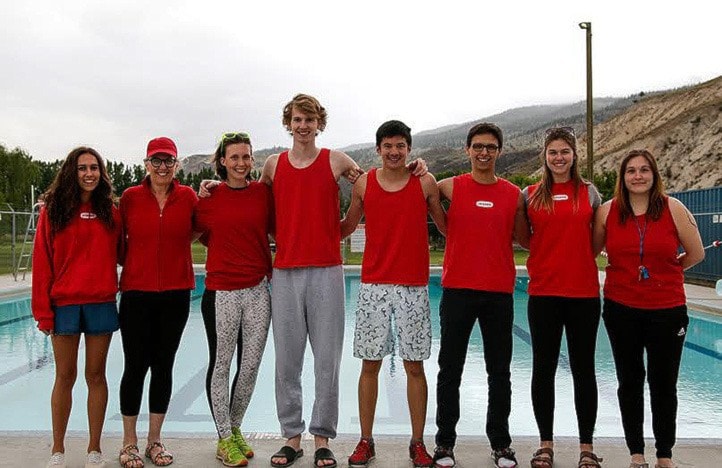It seems odd to be talking about lifeguarding in November, with the first snowfall of the season blanketing the ground and area pools more than six months away from opening. However, Carmen Ranta—head lifeguard at the Cache Creek pool this past year—says that this is exactly the right time to be talking about it.
“Why now?” she asks. “To give people time to register and get their lifeguarding courses in time for next summer.” She notes that several area pools struggled to find enough qualified lifeguards—especially those with their swim instructor qualification—to adequately staff the pools and keep them open at the desired levels, as well as offer swimming lessons.
In the case of Cache Creek, this was only achieved by hiring two part-time instructors who came in daily from Kamloops. Ranta would like to see more local people get their lifeguarding and instructor qualifications.
“It doesn’t just have to be teens,” she says, dispelling the notion that lifeguarding is only for younger people. “It traditionally has been in our area, but there’s absolutely no reason why it has to be youth. When I did my first year at the Cache Creek pool I was in my twenties. And it would be great to have a team of people of all ages.”
She adds that the work environment is “a very positive one. You’re outdoors in the summer, and it’s a fun job in recreation. I really want to encourage youth and adults that this is a great summer job.”
An added incentive for teenagers to take up lifeguarding, she says, is that they get great experience for their future. “And many employers in many fields look on having this [lifeguarding] on your resume as a very positive thing. It attracts some really great people.”
In order to become a lifeguard, candidates must pass through different levels of training and certification offered by the Lifesaving Society, with successful completion of each level a prerequisite to taking the next one. Candidates who progress through the bronze star, bronze medallion, emergency first aid, bronze cross, and standard first aid levels are then qualified to be lifeguards.
Successful completion of the swim instructor course means lifeguards are qualified to teach swimming lesson.
Becoming a lifesaving instructor means being able to teach the bronze star and bronze medallion courses; both of which were offered at the Cache Creek and Ashcroft pools this past summer.
“Offering the two courses here starts people on their training, and it costs a lot less than having to travel to an indoor pool. Both pools had successful candidates at both levels, and we’re hoping to offer them again next year. It makes it easier for people, both driving- and cost-wise.”
Ranta is preparing an information package about becoming a lifeguard, which will soon be available at the Cache Creek village office. In the meantime, she encourages anyone who is interested in learning more about becoming a lifeguard to call her at (250) 457-9119. There is also information available at the Lifesaving Society website at http://www.lifesavingsociety.com/home.aspx.
“So many people here have spent so many hours in our pools,” says Ranta. “They’re a great resource for our communities, and we need to keep them open. It would be really sad to have reduced hours and reduced training. And summer will sneak up on us soon.”
